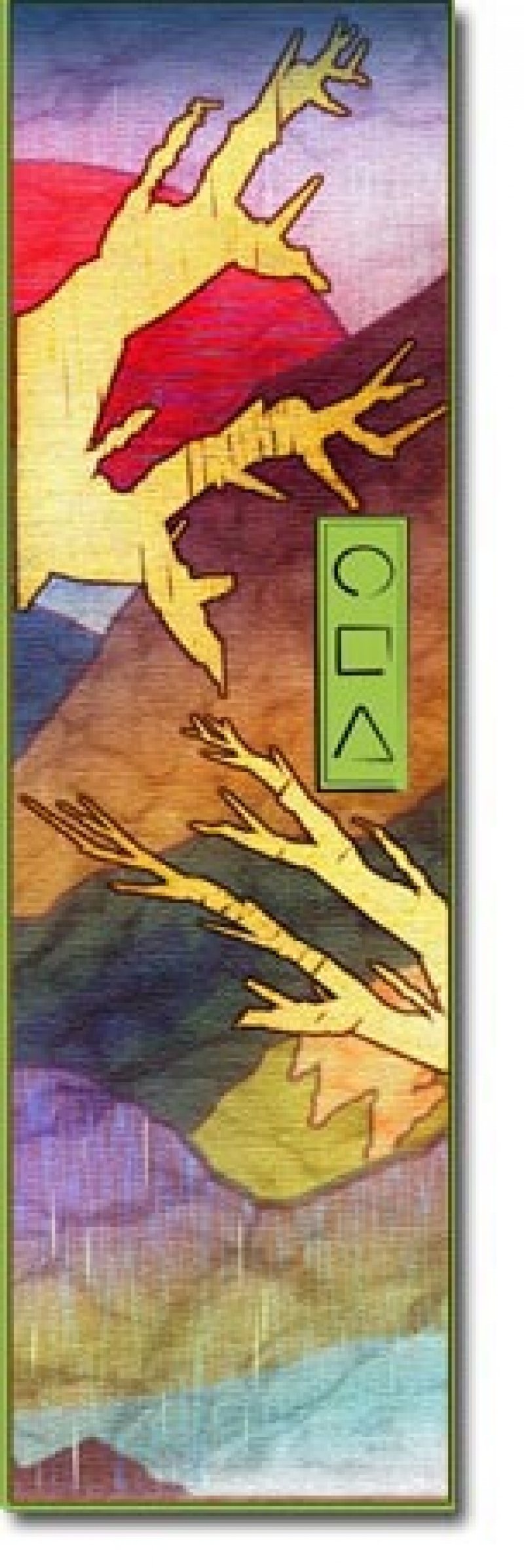On The Way: The Daily Zen Journal
Heaven and Earth
Author unknown, 1739
The Great Way is formless; the universe is the Way with form. The universe itself does not speak; sages are a universe that can speak. I did not get to see the sages, but I have read their classic writings. By reading their classic writings, one can understand their principles; how is that different from seeing the sages?
The One creates our bodies and bestows our nature. Inside and outside both emanate from the One. We are within the Way, and the Way is in our hearts. If we observe the universe and emulate its wisdom, this is not different from the Great Way.
The path of humanity is always coordinated with heaven and earth in the alternation of movement and stillness. Human energy is always in communion with heaven and earth in the alteration of exhalation and inhalation.
Human Life
People today only know they are offspring of their parents; they do not realize that they and their parents are all offspring of the Way.
Master Geng said: “The Way of the wise kings Wen and Wu has not yet collapsed; it is in people. It was not only in the people of the past; it is also in people of the present age. It is not only in people of the present age; it will also be in people of the future.”
When a person is born, a person has one body; in each body is a real human being. The spiritual subtlety of a real human being communes with heaven and earth; the clarity and calm of a real human is free from dust.
The real human has never grown more or less; the real human being has never died or been born. If you can just nurture the real human being, this will be better than a pauper obtaining ten thousand pieces of gold.
Mencius said, “The difference between human and animals is slight; common people obliterate it, superior people maintain it. Those who maintain it become sages; those who obliterate it become beasts.” When they obliterate it,  they turn into beasts right away, not in another life after death.
they turn into beasts right away, not in another life after death.
Unreality
People who study the Way first must recognize reality and unreality before they can enter the Way. We have seen actors portraying failure and success, gain and loss, parting and meeting, sadness and happiness; their outward forms are as they appear, while their minds are inwardly calm.
What have they attained that they are able to be unmoved in mind like this? They are clearly aware that these representations, the costumes, and the makeup, the states of mind and the life situations, are artificially created. They switch roles without loss or gain to themselves. Learners can understand the Way by contemplating this.
Also consider shadow plays. They light a lamp and beat a drum, and a crowd gathers to watch the shadows. As their minds and eyes follow the shadows, they forget themselves, until the oil is used up and the lamp goes out, whereupon all the illusions return to nothing. Intelligent people who observe this can thereby understand the Way.
On a small scale day and night, birth and death; on a large scale eras and ages—all can be understood by analogy. Students of the Way should know that one essential nature is real, while myriad conditions are unreal. All things used in daily life are dust and dirt in unreality—why contend with mediocrities over the amount and grade of dust and dirt?
Author unknown, 1739
Excerpted from Taoist Meditation – Methods for Cultivating a Healthy Mind and Body Thomas Cleary




Like native people everywhere the Taoists learn from nature and seek to be in harmony with Flow. Learning from Nature for them is not like applying principles of Darwinism, but something that incorporates a sense of mystery and oneness.
For “civilized” people learning from nature can sound quaint or primitive, but it is more a reflection of how far we have come from living in harmony with the natural world.
Each of us is attracted to a different doorway of learning about the Way. Some yearn to return to a more grounded sense of Being through direct experience; some are content with pathways that have been laid down by others through the years.
Tried and true techniques seem guaranteed to work on our paths to Enlightenment. So it depends on one’s vasanas which path will draw one forward. However, whatever path one chooses, we need to keep our lights on in our quest. Too often a practice can become stale or more habitual rather than vital.
Whatever our practice we want to stay alive and present in it….
It was almost dark on an early summer evening, and the forest was never more enchanting than now, at dusk. At dusk the mountain begins to withdraw its force back into itself and become quiescent. If you too become quiescent, so still that you can’t even think of your name, you can feel this as a palpable fact.
Just become so still that your mind won’t be bothered to remember the mundane, and then you’ll feel it like the shifting of the winds. Then you’ll know when the mountain changes from exhaling to inhaling. That’s not so important in itself, but the mind that is quiet enough to notice, is.
The mind that is not always caught up in detail is your only treasure. Stop chasing details and become still. The mind that sees details clearly but is not caught by them is like a vast, borderless mirror. That mind does not oppose itself.
Journeys on Mind Mountain
Listening to the breeze,
Elana, Scribe for Daily Zen